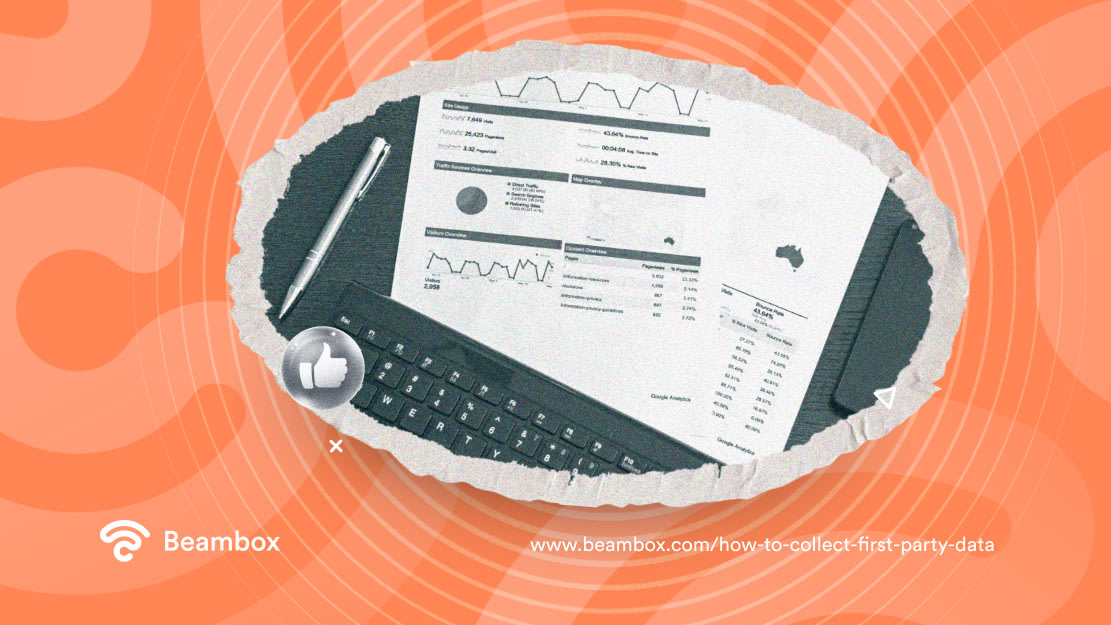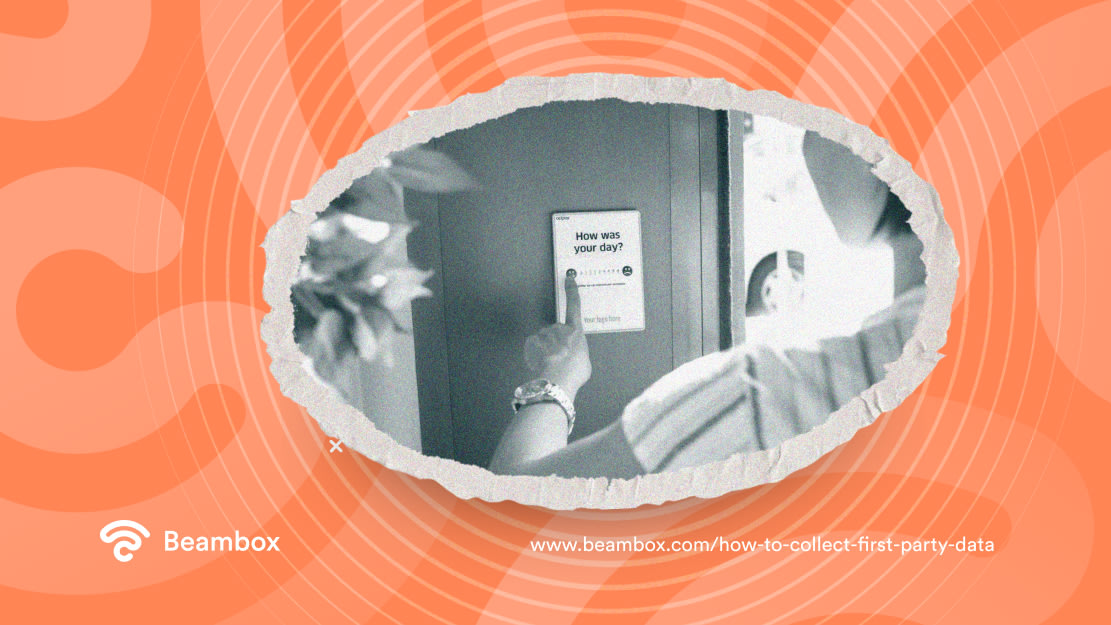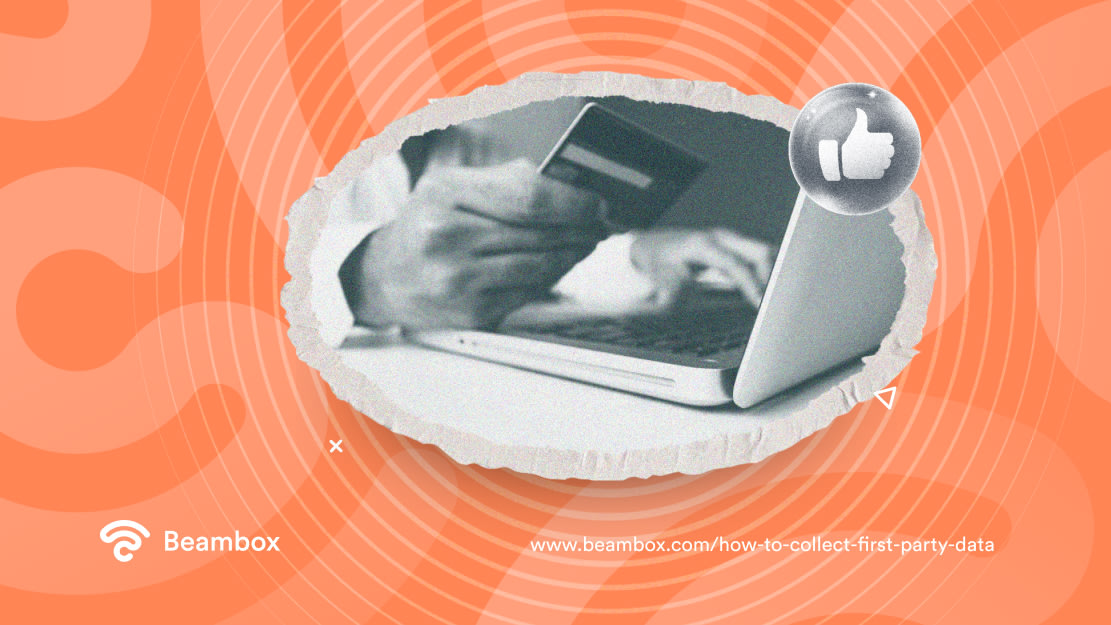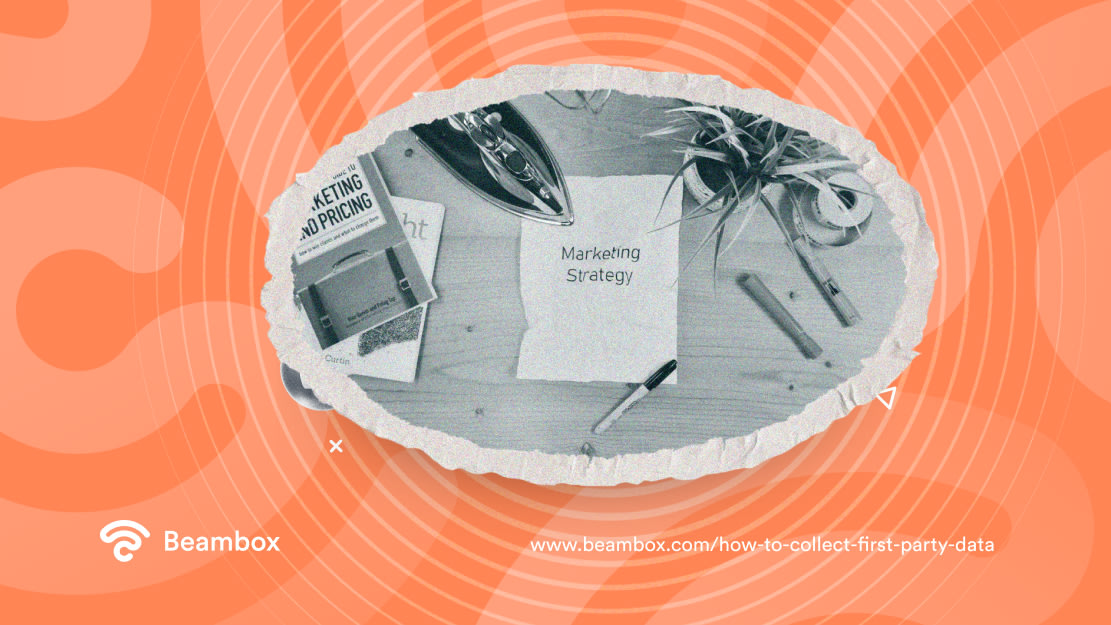How To Collect First-Party Data: 4 of the Best Strategies
If you’ve been keeping tabs on privacy regulations, you might know that giants like Google will eliminate third-party cookies by late 2024. This news has made many marketers change routes and learn how to collect first-party data.
Does that mean you won’t be able to use cookies at all? No, what customers do on your website will always be available through first-party cookies.
There are still plenty of ways to understand your customer’s behavior through data. If you’re ready to learn and put them into action, this is the perfect place to start.

What Is First-Party Data and Why Should You Collect It?
When it comes to collecting data from customers, there’s so much confusion. There are mainly four types of data:
- Zero-party
- First-party
- Second-party
- Third-party
You might collect and use the wrong one if you don’t know the difference between these. So, let’s define them all.
When customers willingly share their information with you, they give you zero-party data.
Alternatively, you get first-party data when customers interact with your brand touchpoints or when they make a purchase. This includes data from tools like Google Analytics that share the conversion rate, bounce rate, etc.
Knowing this data, you can retain customers and reduce your customer churn.
But what about new customers? That’s the case for third-party data. These come from other providers. On the other hand, you collect second-party data from your business partners, who might have a relationship with your customers.
Now, you don’t own third or second-party data. Providers and business partners might not share the means they used to collect them. Therefore, it’s hard to trust this data.
There’s no guarantee that the provider has collected that data with people’s consent. This may put you at a legal risk once you use that data.
However, you collect first and second-party data yourself, so you know if it’s reliable or not. Plus, it gives you deeper insights into who your customers are. It’s also more accurate since you study your current customers to obtain it.
Additionally, third-party is expensive since you have to pay the provider. But with the right systems and processes, first-party data is basically free.
How To Collect First-Party Data: 4 of the Best Strategies
If the above discussion hasn’t convinced you to start collecting first-party data, the following statistics definitely will.
92% of leading marketers believe first-party data is the front and center of business growth. Why? Because this data is the best way to understand your customers at a deeper level. So, here’s how to collect first-party data with four of the best strategies.

Create Surveys and Questionnaires That People Will Actually Fill Out
Surveys, questionnaires, and comment cards are the best way to collect reliable data if you want accurate data. But the problem is that most people aren’t willing to complete lengthy surveys. Or they might find some questions too personal.
However, if you create the right surveys, you will have access to a treasure of data that you can use. But how do you do that?
Start by keeping your survey or questionnaire simple. Don’t add a lot of questions because that will only intimidate them.
Keeping your survey in a multiple-choice format will make it easier for the customers to fill it out. Nobody wants to give long answers, but choosing one option isn’t that much of a hassle.
Moreover, the worst thing you can do is keep multiple pages worth of questions. You have to set the questions in a way that folks can answer without feeling burdened.
Another thing you can do to make sure that you’ll get answers is give out incentives.
Nobody wants to give their time or information to brands without getting something in return. It doesn’t even have to be something big. Even a discount voucher or recognition on your social media page is enough. But make sure that it’s something your customers will like.
You also have to choose relevant channels to send them to customers. For example, if most of your customers are on social media, that’s where you need to show the survey.
But if your customers are more active on your website, use that channel. Analytics tools will help you get this information.
Build a Sizeable Email List
The second way to collect first-party data is by building an extensive email list. This method is the closest to an actual conversation. Here’s how.
When customers subscribe to your newsletter, they willingly give you their email addresses. Plus, they’re consciously making an effort to interact with your brand. After all, it’s not like they’ll type a complete email address by mistake, right? They’re giving you their consent to receive email campaigns.
The hard part is actually building the list. A captive portal is the most efficient way to collect customer emails if you run a local business. Some email marketing tools also let you ask customers what type of emails they want to see. That can give you even more insights into their preferences.
How you collect emails will also depend on the type of data you’re looking for. For example, if you’re a retailer, your customers’ birthdays can play a role in personalized marketing campaigns.
But if you’re a B2B brand, knowing birthdays won’t give you as much advantage as knowing the person’s role. So, only ask what you need to know and keep things simple.
Moreover, you must use a tool that gives you analytics into user behavior. What’s the use of an email list if you can’t see how many people are clicking and interacting?
However, customers won’t share their emails without getting something in return unless they already know your brand. A free eBook, resource, or discount offer is enough to entice them.

Use Personalized Chatbots
People no longer want to wait for customer service representatives to get back to them about their problems. But you can use this to your advantage.
Deploying personalized chatbots can help solve everyday problems and enhance customer experience. But they can also gather valuable customer data. Here’s how.
When customers start a chat, ask them if they’re existing customers or want to explore your products. If they’re an existing customer, ask them their problem directly.
But if they’re exploring, you can ask them their preferences and the area they want to learn more about.
For example, if you’re a hotel, you can ask the customer if they want to book extra service. Once they give you their preference, the chatbot can start giving them recommendations. That’s one of the reasons why AI in the hospitality industry is getting so much attention. But this technique can easily backfire if those recommendations appear aggressive marketing. So, train the chatbot to be subtle during this time.
Moreover, chatbots have attributes that can record tags like names, email addresses, and location. You can also add tags for other things you want to know about your customers during that interaction.
It would also be a good idea to keep an eye on the live conversations in the customer service department.
Launch a Loyalty Program
Customer loyalty for businesses is one of the keys to success in the market. However, you can’t build that overnight.
As mentioned, people are willing to share their information if they get something in return. Plus, people like to feel as if they’re a part of the brands they’re investing in.
That makes loyalty programs one of the most effective strategies to collect first-party data. Here’s how to use them to their fullest.
Start by thinking about your customers. If the incentive you offer isn’t something your customers need, your loyalty program will fail before even starting. Again, you need customer data to create the most effective loyalty program.
But sometimes, you can even guess what your customers need. For example, if you run a family restaurant, a complimentary dessert with each meal will do the trick.
Once you’ve created the strategy, consider what you need to create an accurate customer profile.
Of course, you need to know the name and demographics. But as mentioned earlier, each business needs to learn different things about its customers.
So, ask those things when customers join your loyalty program. Moreover, keep promoting it on social media and all your brand touchpoints so people will be aware of your initiative.
You’ll also need to track how customers interact with your loyalty program. For example, if you’ve kept a discount voucher as an incentive, you must know what they’re purchasing with it. This way, you’ll know your customers’ preferences.
Another way to collect first-party data is using a customer relationship management system.
You use it to interact with your existing and potential customers. It stores every conversation you’ve ever had, making it easier to look into the history of each customer.
Moreover, it stores everything in one place. You don’t have to switch tools to analyze the data.

How To Use First-Party Data in Marketing
Now that you know how to collect first-party data, it’s time to learn how to use it. It doesn’t matter how rich the information is. It will all be for nothing if you don’t know how to use it.
While there are many use cases for first-party data, almost all of them lead to one thing: increased revenue. But marketing is one of the most common reasons businesses collect this data. So, let’s see how to use first-party data in marketing.
It’s no secret that customers expect you to personalize their experience with your brand. In fact, 66% of consumers now demand a personalized experience, which is only possible if you know your customers.
So, firstly, you can use first-party data to deliver personalized recommendations.
You know what your customers prefer, so recommending related products won’t be a problem.
Secondly, you can create the perfect splash pages and landing pages when you know what convinces your customers.
Lastly, first-party data takes away the guesswork from your paid marketing efforts. You can save money by creating paid ads and content you know will work.
Third-Party Cookies Aren’t the Only Way To Know Your Customers
While third-party cookies are great for knowing your target audience, they’ll soon vanish. Plus, you don’t own that data, so there’s no guarantee of accuracy.
On the other hand, if you know how to collect first-party data by yourself, life will be easier. You won’t have to worry about legal risks and data authenticity.
If you own a local business, WiFi marketing solutions are the most efficient way to collect customer data. Beambox is a WiFi marketing platform that gathers data from customers and transforms it into actionable reports. Moreover, you can use Beambox to automate your campaigns, manage your online reputation, and secure your WiFi. Do you want to give it a try? Start your thirty-day free trial now!
Get Started With Free WiFi Marketing
Beambox helps businesses like yours grow with data capture, marketing automation and reputation management.
Sign up for 30 days free


